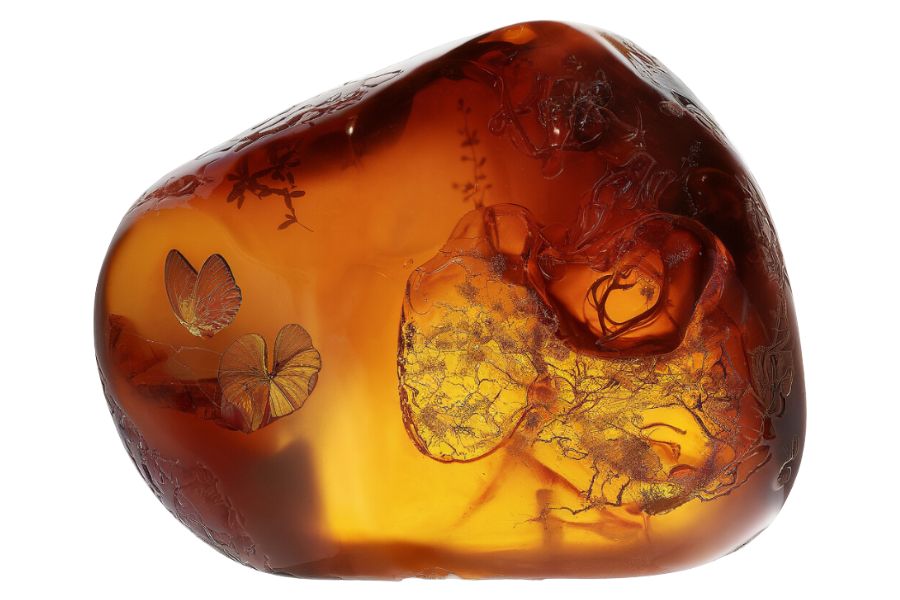Arkansas is known for many natural treasures, and amber is one of them. This fossilized tree resin has drawn collectors and nature lovers to the state for years. Finding amber can be a fun adventure for anyone willing to look in the right spots.
The search for amber in Arkansas often takes people to areas with pine forests and waterways. After heavy rains is usually the best time to go looking. The water washes away dirt and can reveal hidden pieces that weren’t visible before.
We’ll walk you through where to look for amber in Arkansas. You don’t need to be an expert to enjoy the hunt. Even beginners can have success with a bit of patience and a sharp eye.
How Amber Forms Here
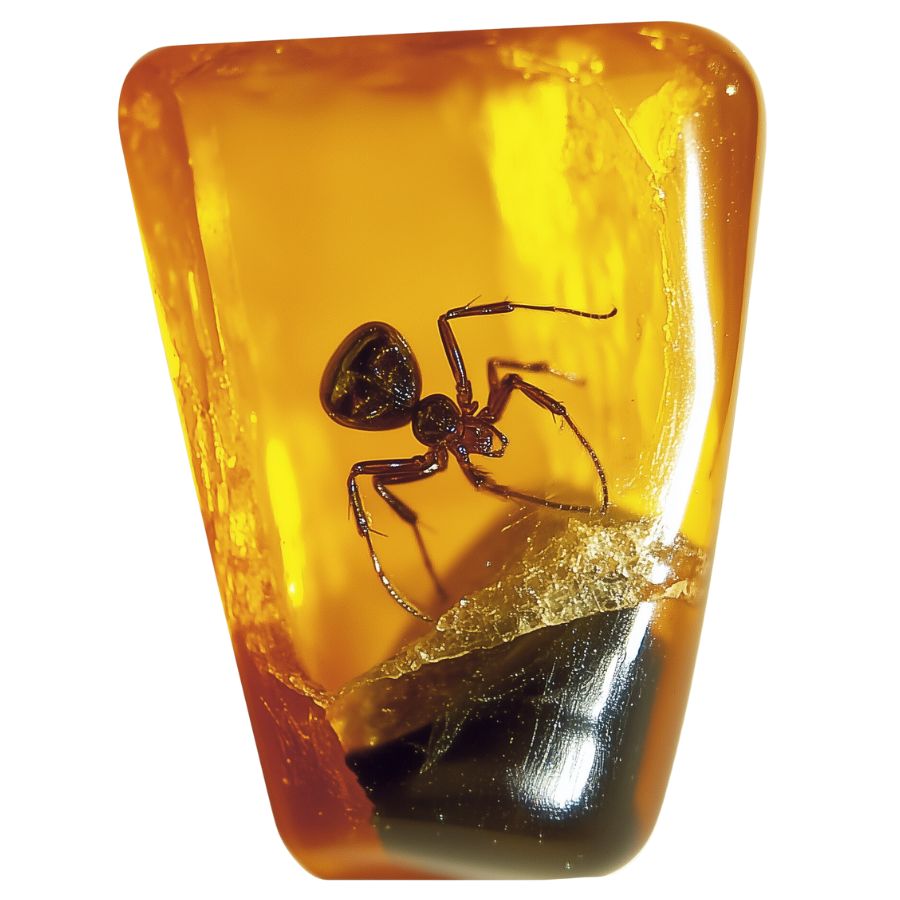
Amber begins its journey as sticky resin flowing from ancient trees millions of years ago. When insects or small plants got trapped in this golden liquid, they became perfectly preserved time capsules.
Over thousands of years, the resin hardens through a process called polymerization, where molecules link together to form larger, more complex structures.
As layers of sediment buried these hardened resin deposits, pressure and time transformed them into the gemstone we know as amber.
The process requires specific conditions: the resin must be protected from oxygen and excessive heat while maintaining steady pressure from surrounding rock and soil. That’s why we often find amber in sedimentary rock formations.
Types of Amber
You might think amber just comes in that classic honey color, but there’s actually an incredible variety of amber types out there – each with its own unique characteristics and formation story. Let’s dive into the most common ones you might come across.
Baltic Amber
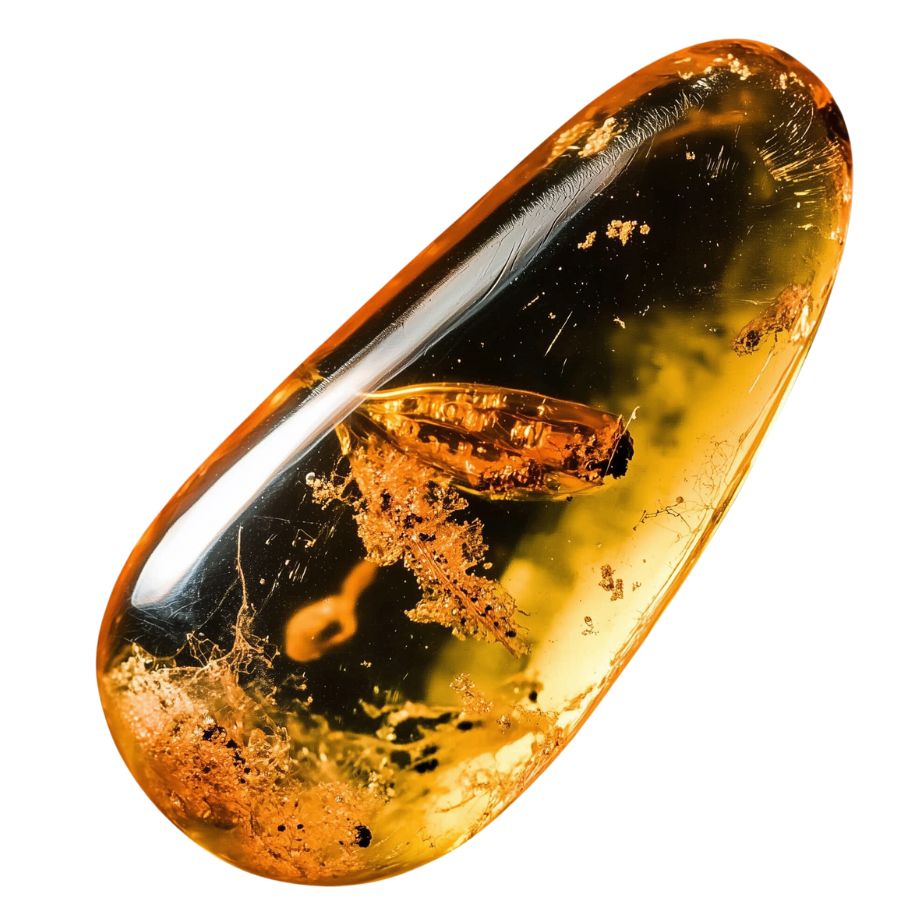
Baltic amber stands out with its warm spectrum of colors ranging from honey yellow to deep cognac brown. Its surface can be transparent enough to see through or completely opaque.
The chemistry of Baltic amber is quite remarkable. It contains high amounts of succinic acid, which isn’t found in other ambers. This unique chemical makeup gives it special properties, like generating static electricity when rubbed.
At 30-50 million years old, Baltic amber tells fascinating stories about Earth’s past. The resin came from ancient pine forests that once covered Northern Europe. The sticky resin trapped small creatures and plant parts, preserving them in incredible detail.
Many pieces show interesting patterns created by air bubbles and natural flow lines from when the resin first dripped down tree trunks. These patterns, combined with its natural warmth and glow, make each piece one-of-a-kind.
Dominican Amber
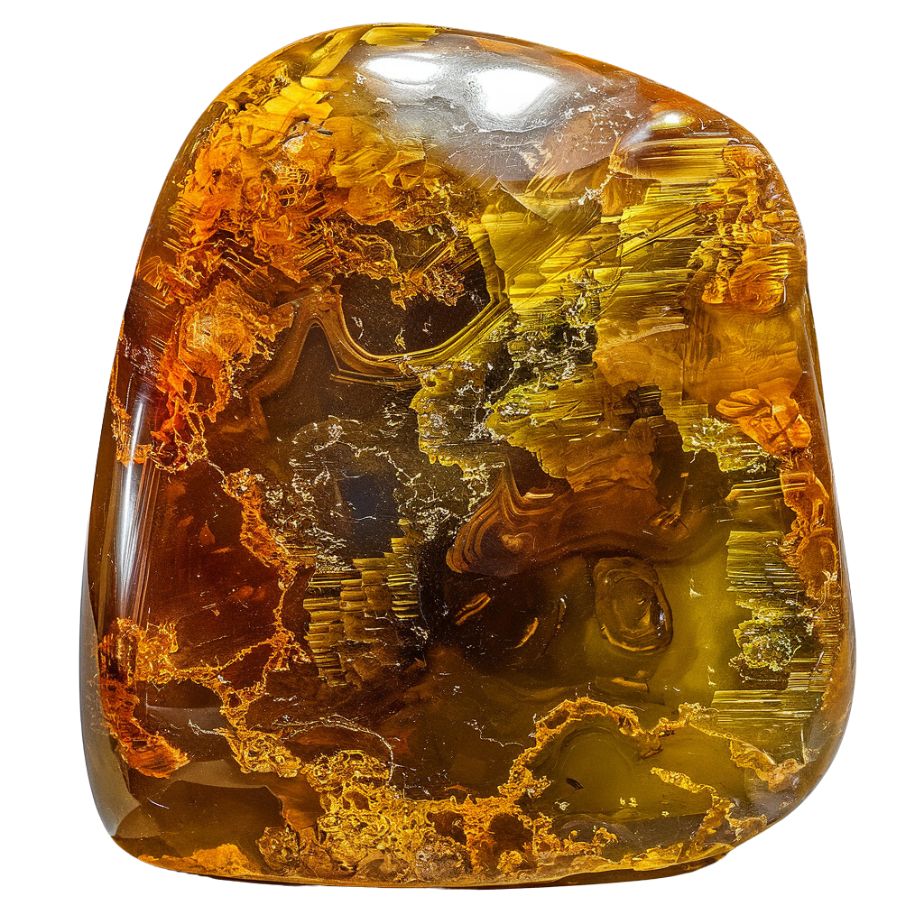
Dominican amber is famous for its exceptional clarity and brilliant colors. While most pieces show honey and cognac tones, some rare specimens display stunning blue and green hues. The transparency is so remarkable that you can clearly see tiny details of preserved insects and plants inside.
A special variety called blue amber makes Dominican amber truly unique. When held under sunlight, these pieces transform from a pale yellow to a brilliant blue color. This happens because of a special way the amber interacts with light – a feature not found in other ambers.
The amber dates back approximately 16 to 25 million years, making it one of the youngest types of amber available.
Mexican Amber
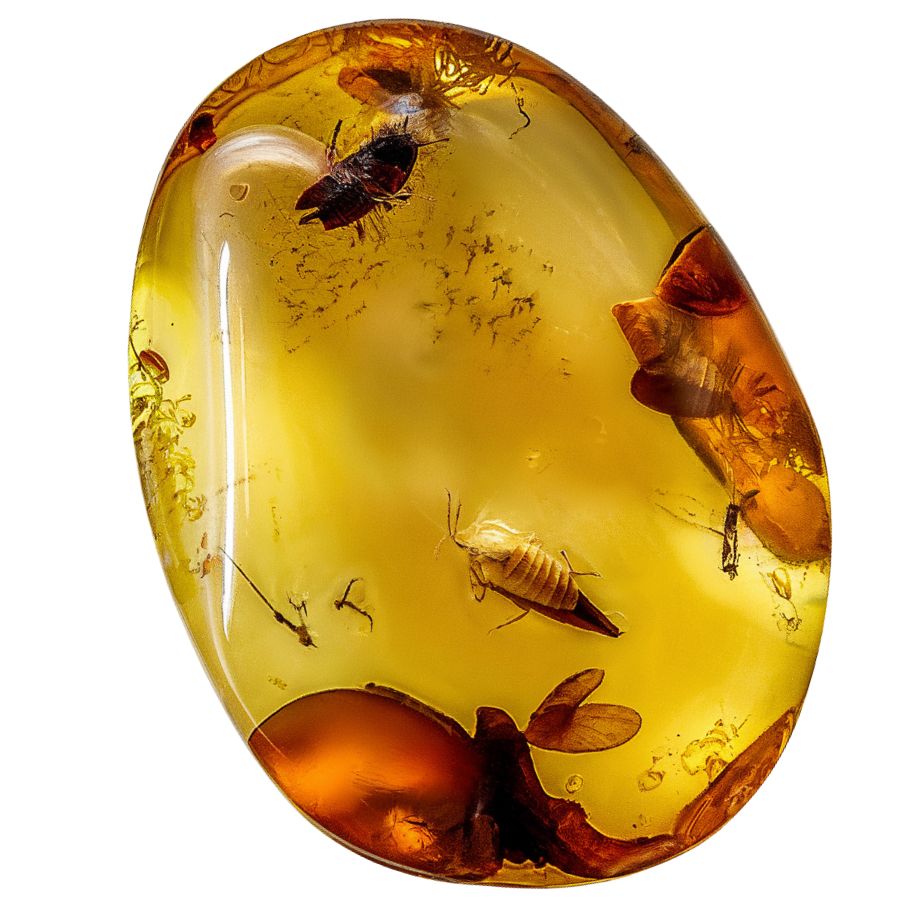
Mexican amber captivates with its rich palette of colors, from golden yellow to deep red, with occasional pieces showing rare pink or purple tints. Its extraordinary clarity allows detailed views of the ancient life preserved within, including perfectly preserved insects and plant materials.
Dating back 15-30 million years, this amber formed during a time when the region was covered in tropical forests. The resin came from an extinct species of tree related to the modern legume family, giving it distinct characteristics from other ambers.
The preservation quality of inclusions in Mexican amber is exceptional. Scientists have discovered new species of ancient insects in these time capsules, with some specimens showing details as fine as individual hair strands and wing patterns.
Oise Amber
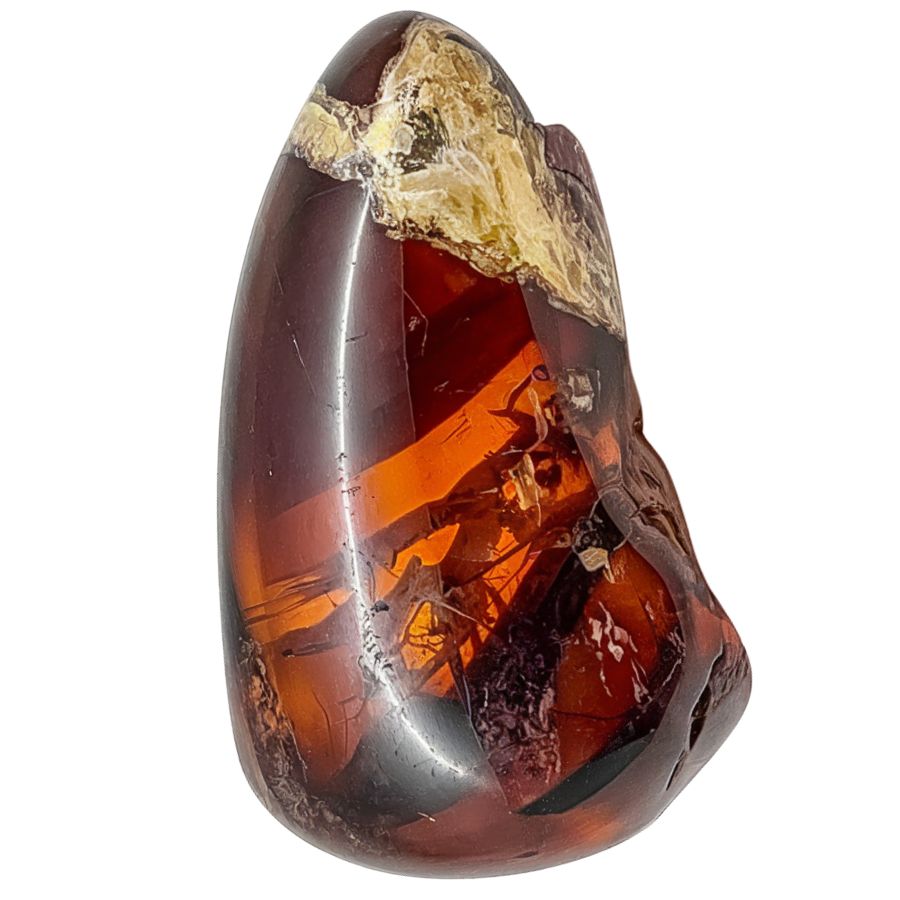
Oise amber, dating back 55-53 million years, shows remarkable transparency with subtle yellow to orange shades. Its clarity lets you see deep inside, where ancient insects and plants remain perfectly preserved since the early Eocene period.
The material has a unique density and structure that sets it apart. It’s generally thicker and more robust than other ambers, which has helped it preserve its contents so well over millions of years.
Scientists have identified over 20,000 different species in Oise amber specimens. These findings include rare insects and plants that help us understand what life was like during the early Cenozoic era.
The amber often contains multiple layers, showing different periods of resin flow. These layers create interesting patterns and sometimes trap air bubbles, making each piece unique.
Burmese Amber
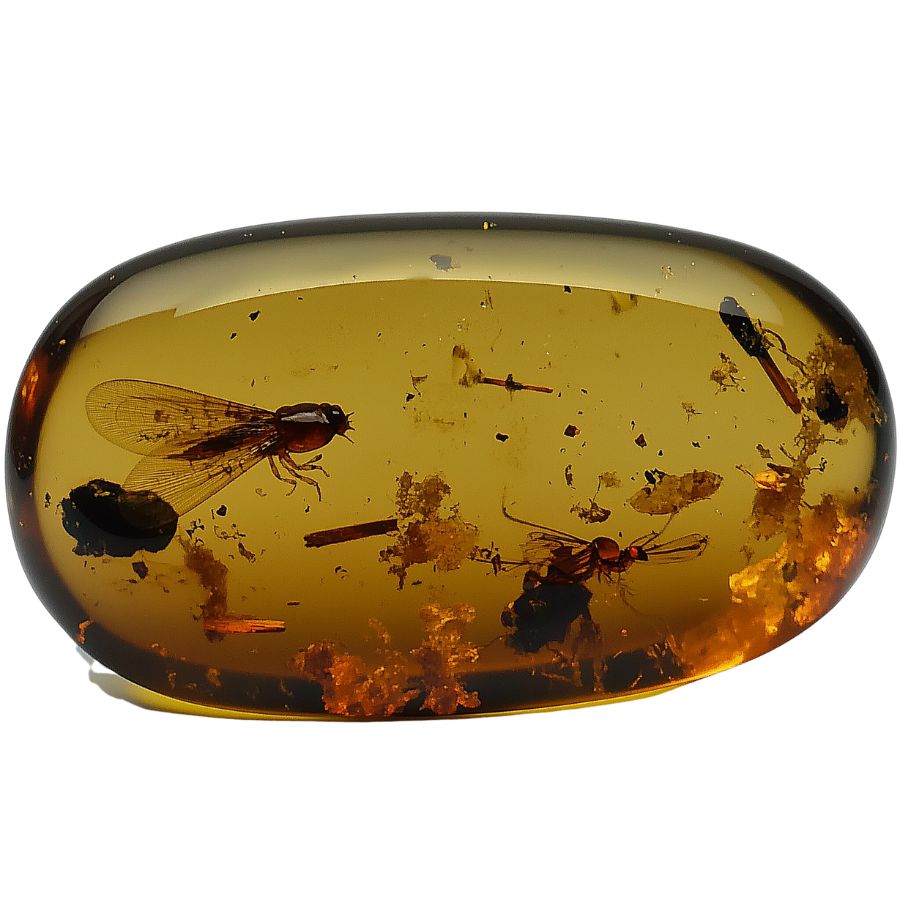
Burmese amber is super old, about 99 million years! It’s usually shaped like a flat disc and comes in reds and browns. A distinctive feature of Burmese amber is the presence of thin calcite veins that can measure between 1 mm to 4.5 mm.
Scientists have found amazing things inside, including baby birds, lizards, and even parts of dinosaurs with feathers still attached. The preservation quality is so good that they can see tiny details that are millions of years old.
The inclusions in this amber are often larger than those found in other types. You might find complete insects with all their body parts intact, or plant materials showing clear cell structures.
These preserved specimens help scientists understand what life was like during the Cretaceous period.
Sicilian Amber
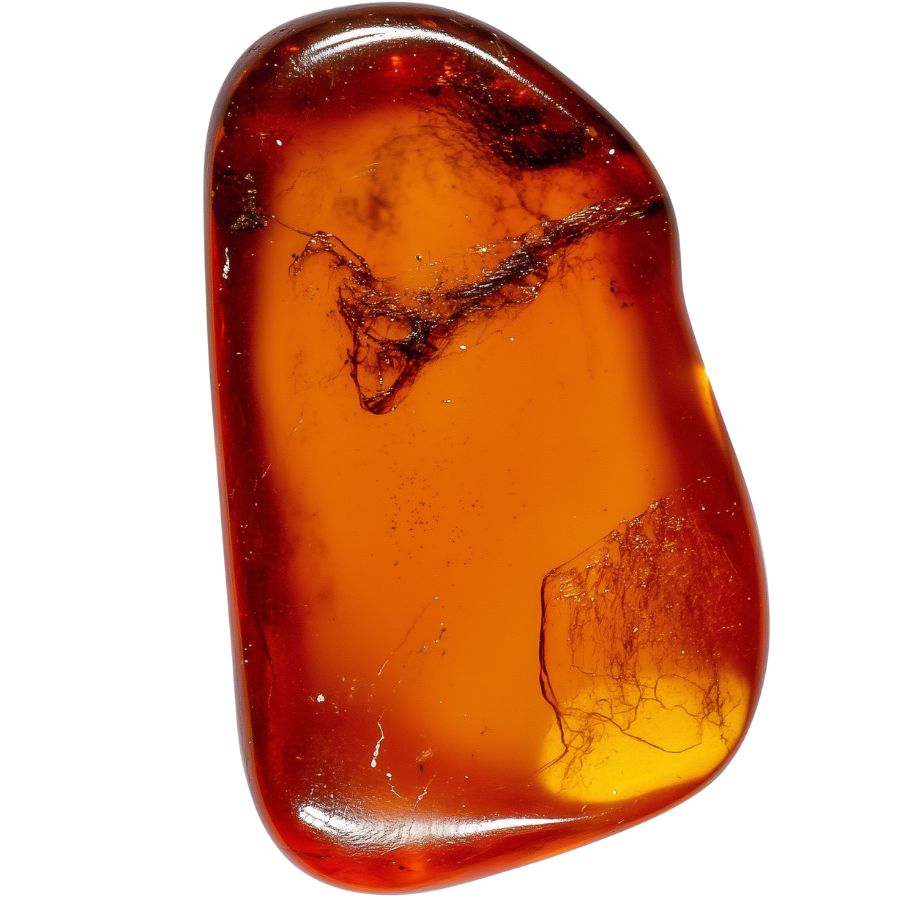
Sicilian amber shows off beautiful golden to yellowish-brown colors with exceptional clarity. The material has a uniform appearance and brilliant transparency that makes it stand out. You won’t find many air bubbles or cloudy areas in this amber.
This ancient material played a crucial role in early European trade, being used and valued about 2,000 years before Baltic amber became popular. Its age remains somewhat mysterious, but scientists believe it formed between 10 to 20 million years ago.
The formation process created amber with unique optical properties. When light passes through it, the amber seems to glow from within. This special characteristic made it highly prized throughout history.
What makes this amber special is its purity and brightness. Each piece typically shows consistent color throughout, unlike other ambers that might have varying shades or patterns. This uniformity gives it a distinct appearance that collectors can easily recognize.
Sumatran Amber
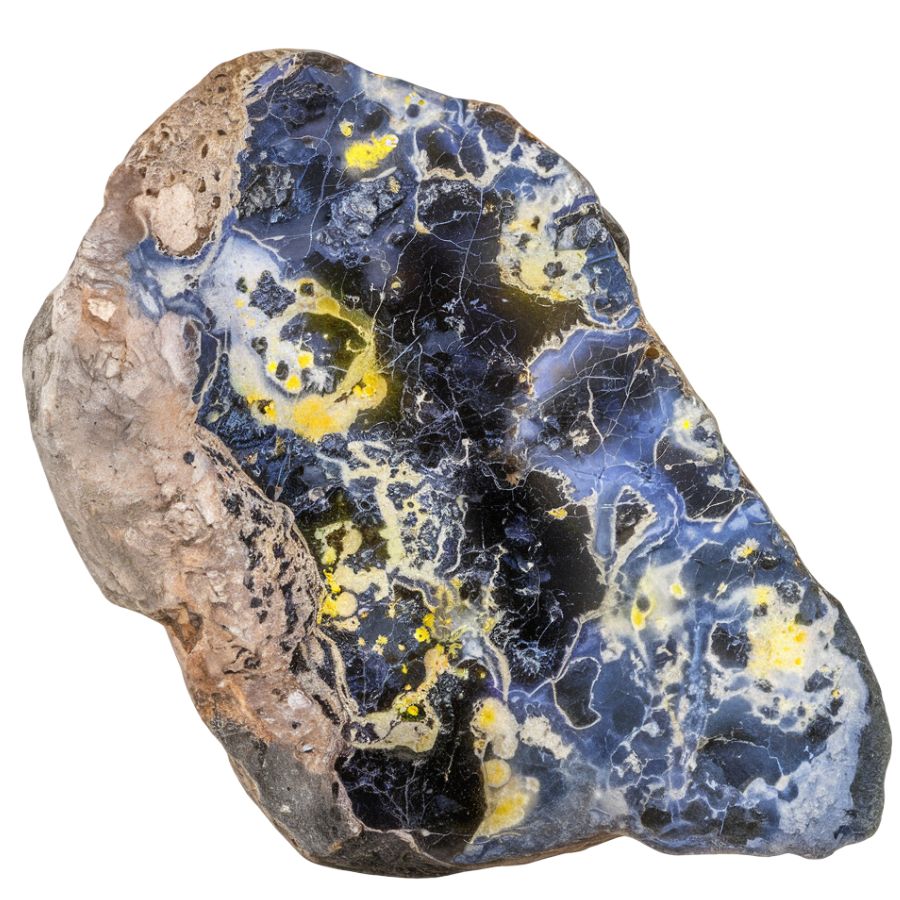
Sumatran amber comes in some really cool colors. You can find it in regular amber colors, but also in red, olive green, and even blue! The blue kind is super rare and special.
Here’s something awesome – when you shine a UV light on Sumatran blue amber, it glows! This happens because of special stuff inside the amber. Also when heated, some pieces even release a pleasant scent.
The blue Sumatran amber is famous because there are only two other places in the world where you can find blue amber. Scientists think this amber formed millions of years ago from trees that don’t exist anymore.
Collectors love Sumatran amber, especially the blue kind. It’s not just pretty – it also helps scientists learn about plants and animals that lived long ago.
Lebanese Amber
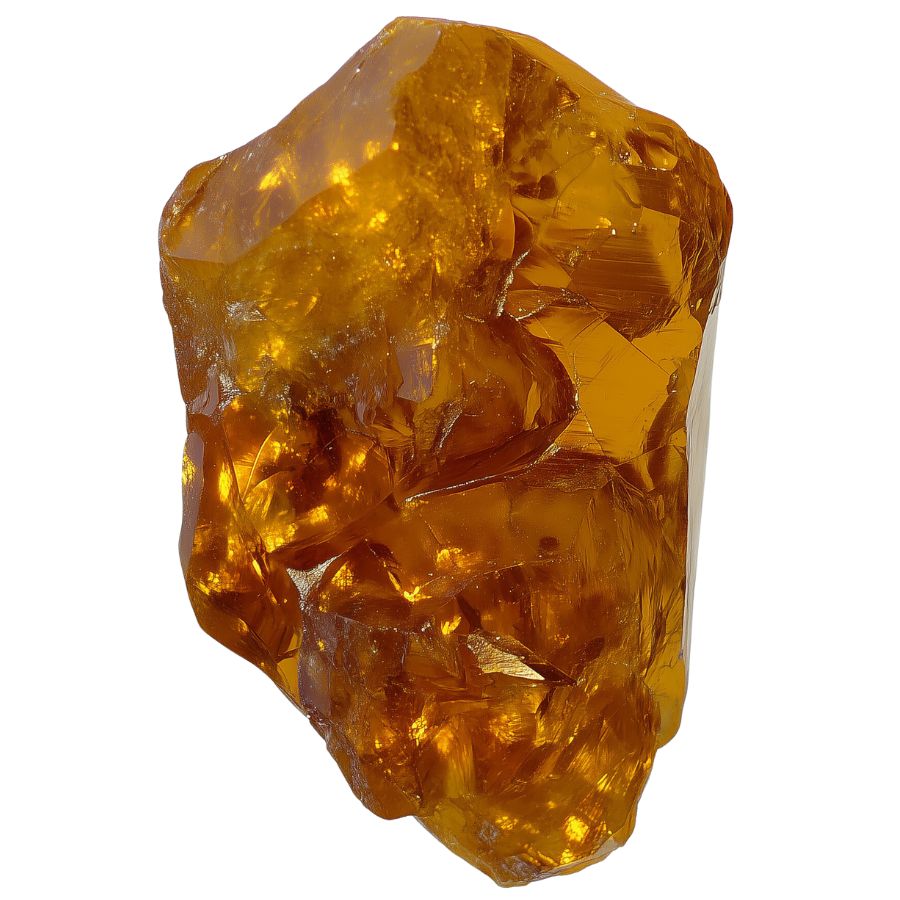
Lebanese amber shines with golden to yellowish-brown colors and remarkable clarity. The material is amazingly transparent, letting you see deep inside.
This 130-135 million-year-old amber stands out as one of the oldest known ambers in the world. Its age places it during a crucial time when flowering plants first appeared on Earth, capturing evidence of this major evolutionary transition.
The material contains some of the earliest known mosquitoes ever discovered, making it invaluable for understanding insect evolution. These mosquito specimens show how these insects adapted alongside the first flowering plants.
What’s particularly special about Lebanese amber is its role in documenting the rise of pollinating insects. The specimens inside show the beginning stages of insect-plant relationships that would later shape Earth’s ecosystems.
Bitterfeld Amber
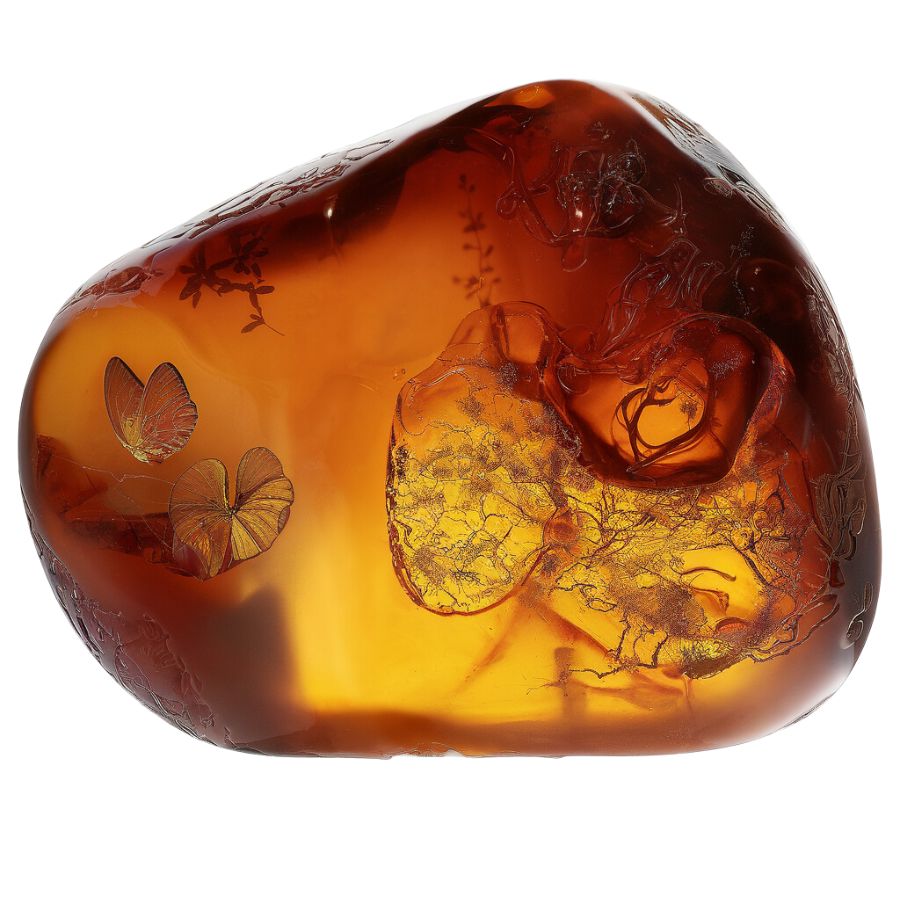
Bitterfeld amber displays warm yellow to brown colors with fascinating transparency. This amber has distinct chemical markers that indicate it came from a different type of ancient forest than those that produced other well-known ambers.
The trapped creatures inside tell a different story than Baltic or Dominican amber. Scientists have found species that don’t appear anywhere else, suggesting this area had its own distinct ecosystem millions of years ago.
The material shows evidence of a warmer climate period in ancient Europe. The preserved plants and insects indicate environmental conditions quite different from what other European ambers reveal about their time periods.
Recent studies of this amber have challenged previous theories about amber formation in Europe, suggesting multiple independent amber-producing forests existed rather than just one major source.
Caribbean Amber
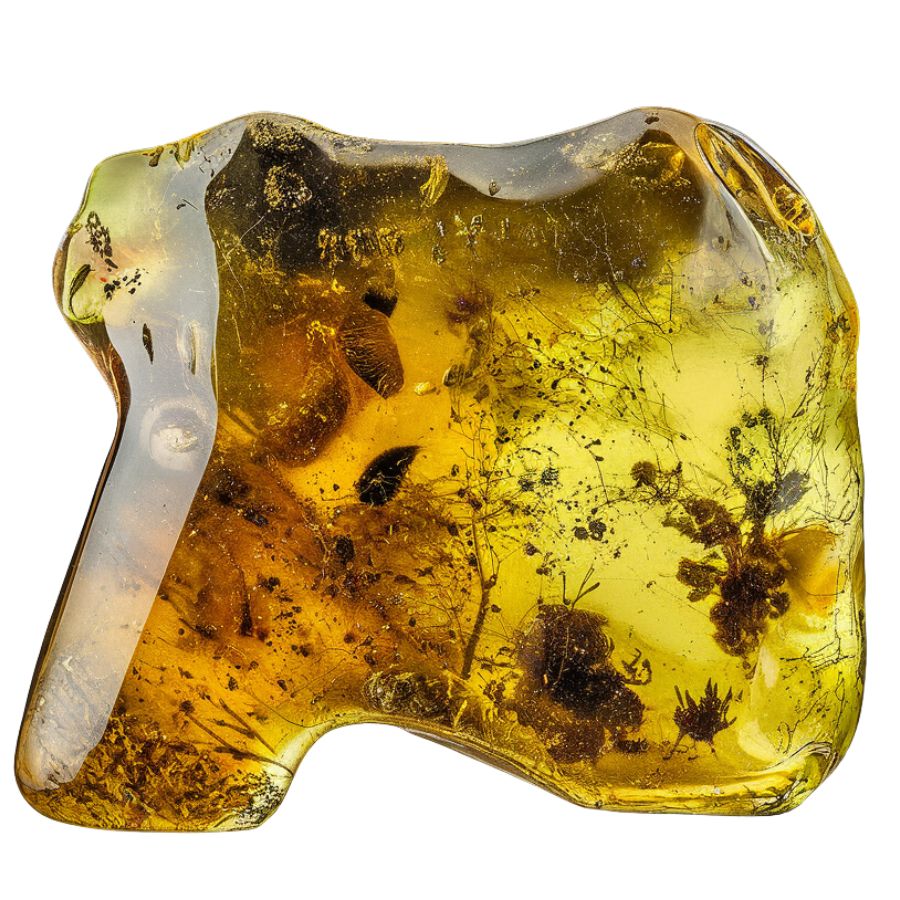
Caribbean amber is famous for its exceptional clarity and brilliant colors. You can find pieces in yellow, honey, and red shades. Espeically the rare blue variety found in Caribbean amber is created by a unique interaction between light and hydrocarbons trapped inside.
These pieces contain tropical species that reveal details about ancient Caribbean rainforests. The preserved creatures are distinctly different from those found in amber from other regions, showing how island ecosystems evolved separately.
The material offers insights into species that existed before the Caribbean islands separated from mainland America. This helps scientists understand how island isolation affects evolution.
The preservation quality is so exceptional that scientists have discovered new species of extinct animals that weren’t known from any other fossil sources, including unique types of lizards and spiders.
What Rough Amber Looks Like
Before you get excited about finding amber, let’s dive into how to spot this fascinating fossilized tree resin in its natural, unpolished state.
Check for a Glassy or Waxy Luster
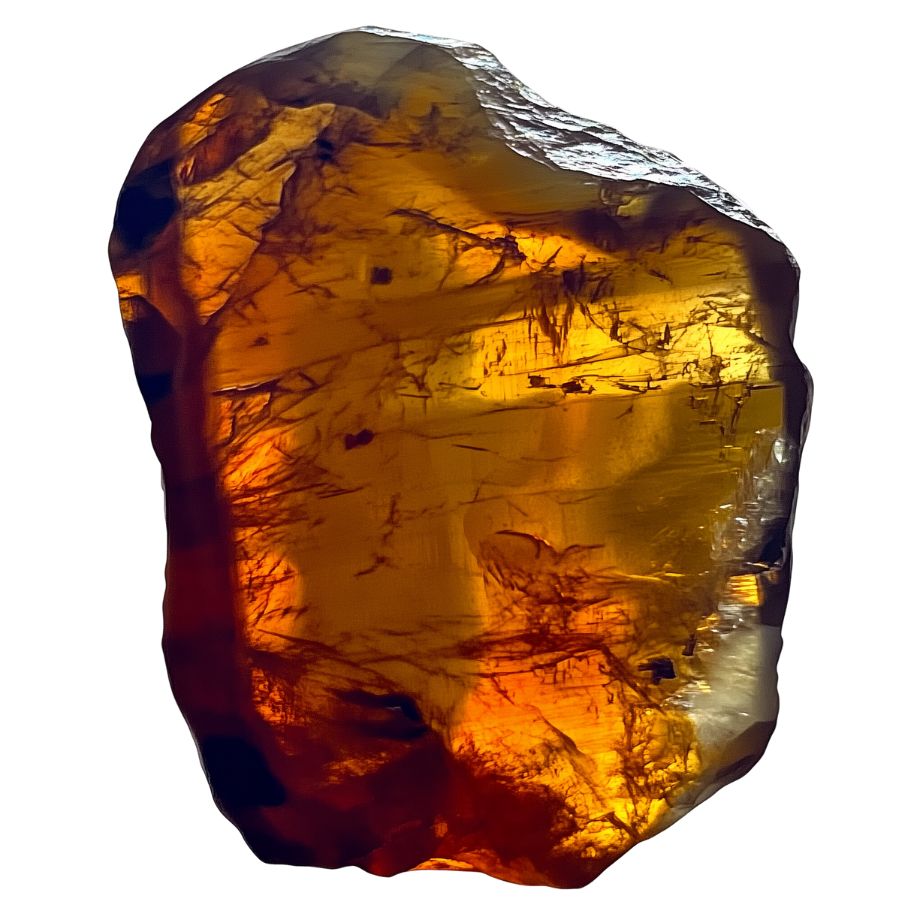
Raw amber typically has a subtle, waxy sheen – quite different from regular rocks. It’s not super shiny like polished amber, but it’s got this unique greasy-looking surface.
If you spot something that looks like hardened honey or tree sap, you might be onto something! Even in its rough state, amber often has translucent edges when held up to light.
Look for the Distinctive Colors
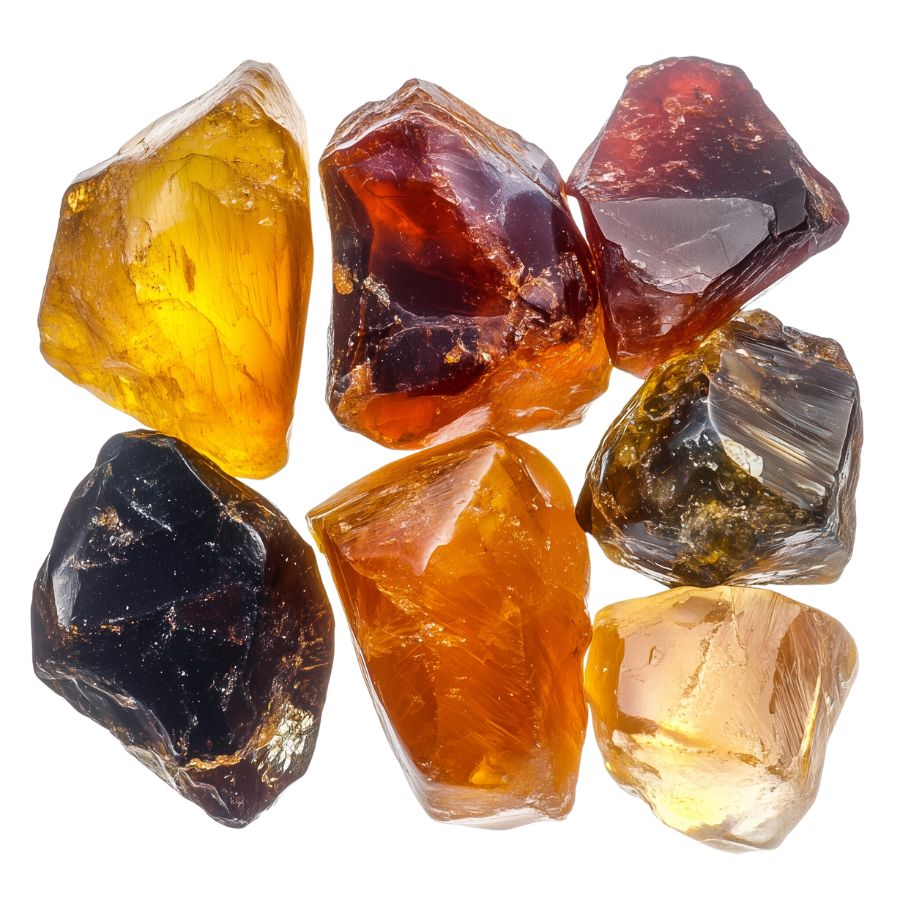
Natural amber comes in an amazing range of hues, but most rough pieces are a cloudy yellow-orange or butterscotch color. Some pieces might have whitish surface oxidation (we call it “amber cortex”).
You might also spot deeper cognac browns or even rare blue pieces. Don’t be fooled by the muddy exterior – that’s totally normal for rough amber!
Assess the Density and Weight
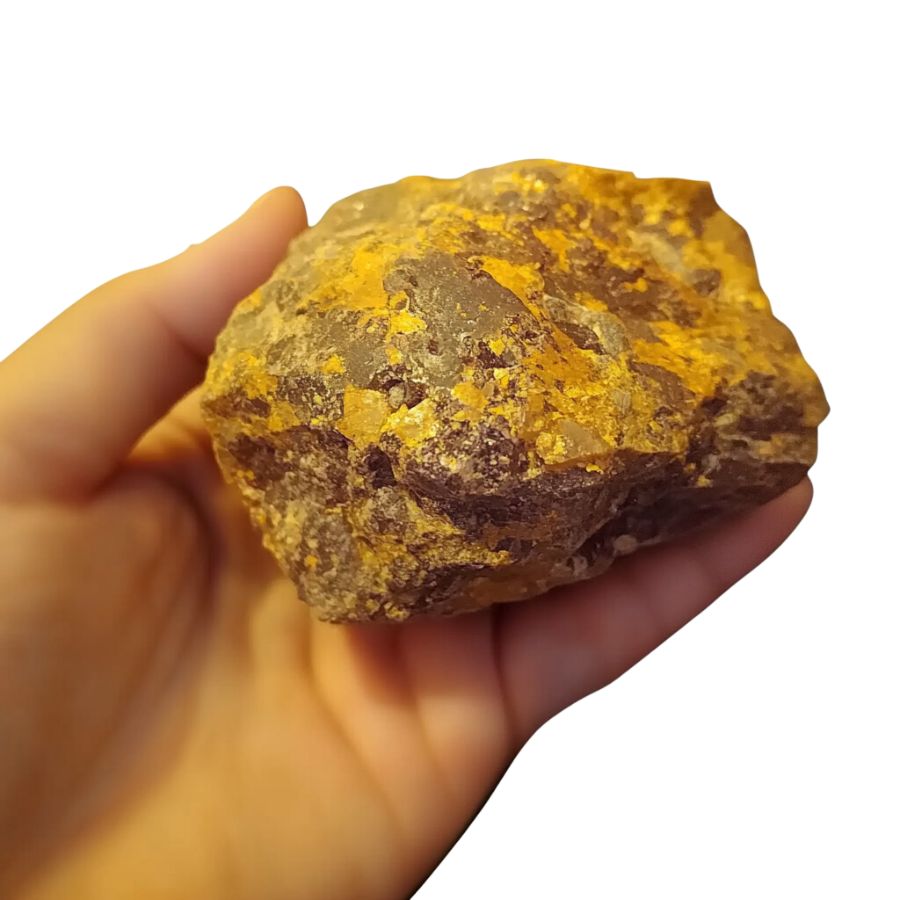
Here’s a cool trick: Amber feels surprisingly light for its size! Pick it up – if it feels lighter than a regular rock of the same size, you might have amber.
It’s about as dense as sea salt, which means it’ll float in super salty water. Unlike most stones, it’ll feel warm to touch almost immediately.
A Quick Request About Collecting
Always Confirm Access and Collection Rules!
Before heading out to any of the locations on our list you need to confirm access requirements and collection rules for both public and private locations directly with the location. We haven’t personally verified every location and the access requirements and collection rules often change without notice.
Many of the locations we mention will not allow collecting but are still great places for those who love to find beautiful rocks and minerals in the wild without keeping them. We also can’t guarantee you will find anything in these locations since they are constantly changing.
Always get updated information directly from the source ahead of time to ensure responsible rockhounding. If you want even more current options it’s always a good idea to contact local rock and mineral clubs and groups
Where to Look for Amber
Amber hunting is like a treasure hunt! Here’s where you’re most likely to find these golden gems.
Along Coastal Areas and Beaches

Hit the beaches after storms – that’s when amber tends to wash up! Focus on areas where you spot lots of seaweed or driftwood piles, as amber often gets caught in these natural collection points.
The best spots are usually where the tide leaves a dark line of debris on the sand, especially after strong waves have stirred up the seafloor and brought ancient deposits to the surface.
Investigate River Banks and Gravel Bars

Rivers are nature’s sorting machines! Check out gravel bars and sandy banks, especially downstream from eroding cliffs. Look where the water slows down and deposits lighter materials.
The best time to search is after floods when rivers have churned up new material and redeposited it along their banks.
Clay and Sand Deposits
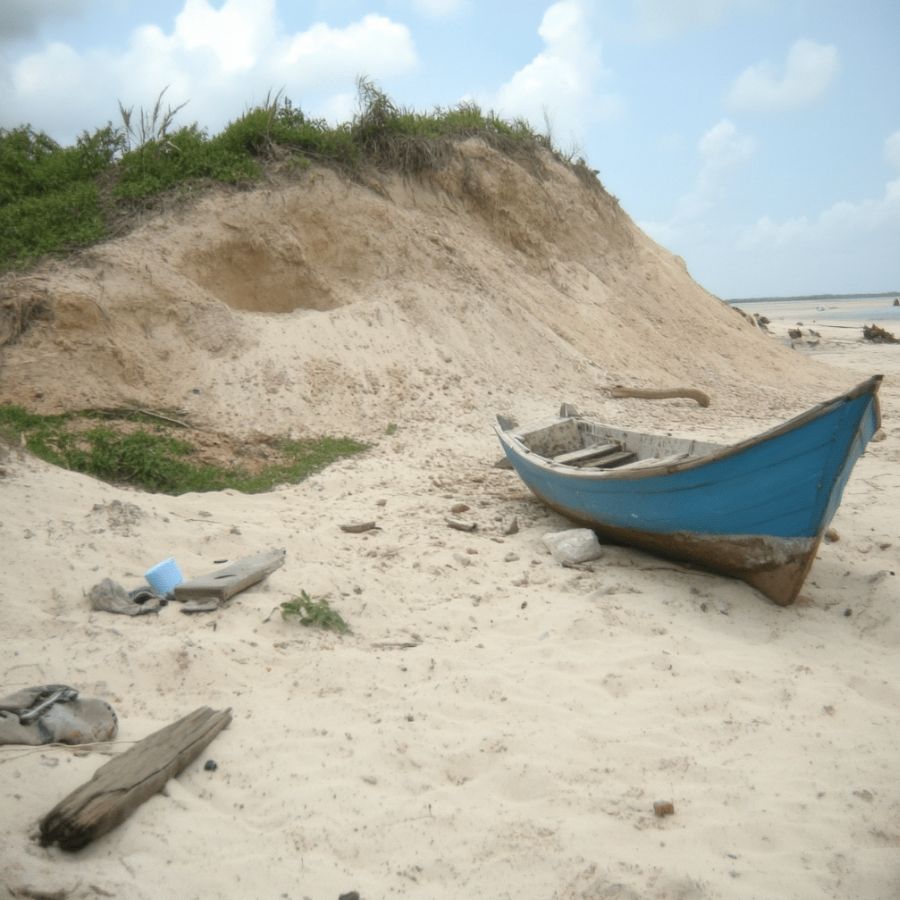
Search in areas with exposed clay banks, particularly those with dark, organic-rich layers that indicate ancient forest beds.
Sandy areas near clay deposits are prime spots because water naturally sorts materials by weight, often concentrating amber in specific layers. Look carefully after heavy rains when new material gets exposed.
Construction Sites and Quarries

With proper permission, check out newly excavated areas, especially those cutting through sedimentary layers.
Pay special attention to sandy or clayey layers that might represent ancient coastlines or forest beds. These disturbed areas often expose deposits that have been buried for millions of years.
Some Great Places To Start
These are some of the places where you can find amber around the state.
Always Confirm Access and Collection Rules!
Before heading out to any of the locations on our list you need to confirm access requirements and collection rules for both public and private locations directly with the location. We haven’t personally verified every location and the access requirements and collection rules often change without notice.
Many of the locations we mention will not allow collecting but are still great places for those who love to find beautiful rocks and minerals in the wild without keeping them. We also can’t guarantee you will find anything in these locations since they are constantly changing.
Always get updated information directly from the source ahead of time to ensure responsible rockhounding. If you want even more current options it’s always a good idea to contact local rock and mineral clubs and groups
Perla

Perla is a small town in Hot Spring County, located east of Malvern along Highway 67/270. This area was first known for its timber resources in the late 19th century. The town was named after Perla Marie Strauss, the daughter of a local lumber industry pioneer.
Amber can be found in the Malvern clay pits of Perla. These pits are famous for brick-making because of their rich clay deposits. The amber here is found in lignite and lignitic shale layers within the central Arkansas Coastal Plain. These amber pieces date back to the Middle Eocene epoch, roughly 40 million years ago.
Many amber samples from Perla contain well-preserved fossils of ancient insects and plants. Rockhounds visiting Perla should focus on areas with exposed lignite, as amber is often embedded within these dark brown coal-like deposits.
The clay pits have historically yielded good specimens for collectors willing to carefully search through the material.
Crowley’s Ridge

Crowley’s Ridge extends about 200 miles from Missouri through eastern Arkansas. This unusual landform rises 150 to 250 feet above the flat Mississippi Delta region.
Amber hunters should focus on the lignite beds of Tertiary age found within the ridge. These beds are often exposed during the mining of brick clay throughout the formation. The ridge itself formed from ancient river activity and wind-blown silt called loess, which can be up to 50 feet deep in some areas.
Besides amber, rockhounds might find selenite crystals in the bluffs above Copperas Creek, east of Wynne along Highway 64-B. The ridge also holds massive silicified conifer stumps near Wittsburg and Piggott.
Fossil enthusiasts might be interested in the mastodon bones discovered in Helena and huge oyster shell deposits near Forrest City.
Little River
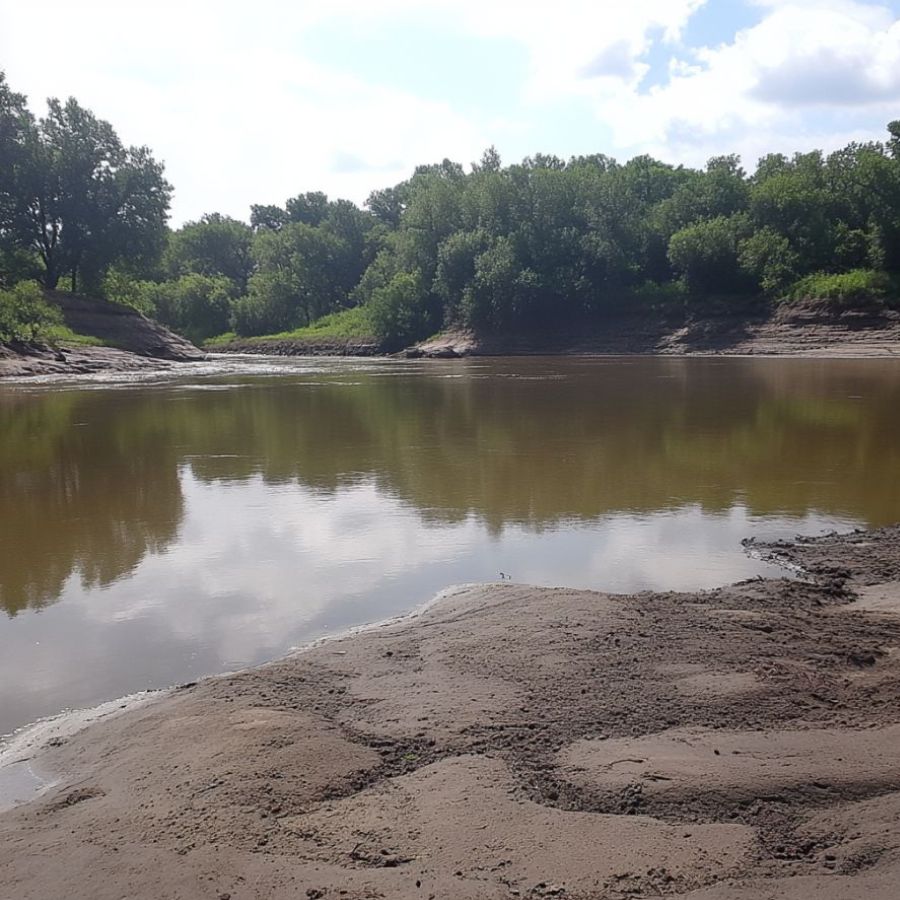
Little River flows through southwestern Arkansas before joining the Red River near Fulton. The area features forests, farmland, and wetlands that create a diverse landscape for mineral hunting.
Amber pieces can be discovered in lignite beds along the river’s banks. These amber specimens often show interesting wood-grain patterns because they preserved tree material alongside the ancient resin.
Geological features in the Little River area include the Annona Chalk formation from the Cretaceous period. This chalk holds many fossils from ancient sea creatures like echinoderms, bivalves, and cephalopods.
The best strategy for finding amber here is to look for exposed areas of lignite, a soft, brownish coal, along the riverbanks. Heavy rains sometimes wash new material into the open, making after-storm visits potentially rewarding.
Local collectors recommend checking areas where the river has cut into older sediments, as these spots often reveal the lignite layers where amber is typically found.
Saline River

Saline River stretches 202 miles as a tributary of the Ouachita River, flowing entirely within Arkansas. Four forks, South, Middle, Alum, and North, join northwest of Benton to form the main river. The upper sections feature clear water with fast shoals and quiet pools, while the lower parts move more slowly with murkier water.
Amber collectors should focus on areas with lignite exposures along the riverbanks. Goulett Island in Bradley County offers promising hunting grounds with its large lignite fields.
Another good spot is Peeler Bend near Benton in Saline County, where lignite appears along the shore. The river cuts through regions with Atoka Formation rock, marine sandstones, siltstones, and shales from the Pennsylvanian period.
Wildlife thrives around the Saline River, including bear, deer, otters, and alligators in southern sections. Fish like smallmouth bass, channel catfish, and crappie make the river popular with anglers. Recent floods may expose fresh lignite beds, creating new opportunities for amber hunting.
Arkansas River
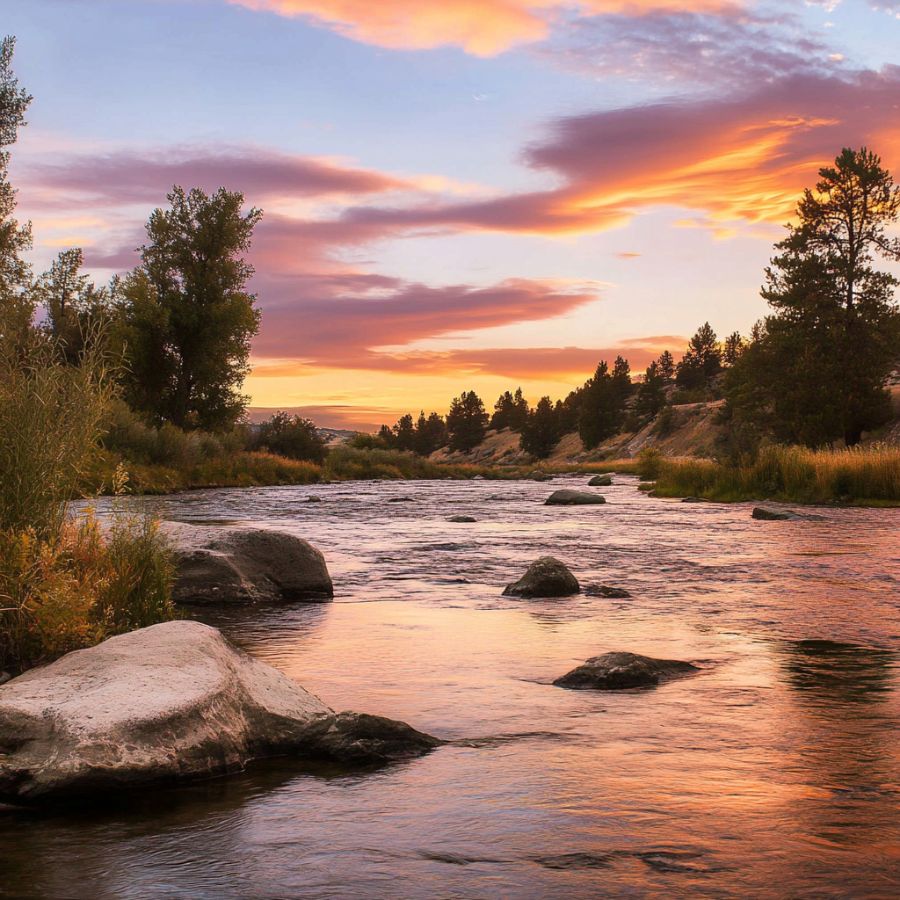
Arkansas River winds through the state creating a varied landscape of plains, hills, and mountains. The river valley holds a mix of geological treasures, including amber deposits.
Amber pieces are typically found in lignite layers exposed along the riverbanks. The best approach for amber hunting is to search areas where erosion has uncovered these dark brown coal-like deposits.
Water action constantly reshapes the shoreline, sometimes revealing new amber specimens after heavy rains or flooding. Gravel bars along the main river and its tributaries can trap amber pieces that have washed downstream.
Besides amber, the nearby Ouachita Mountains produce world-famous quartz crystals, especially around Mount Ida in the Crystal Mountains area. Novaculite, a hard rock traditionally used for sharpening tools, can also be found in the region. Spring and fall offer comfortable temperatures for exploring the riverbanks.
Places Amber has been found by county
After discussing our top picks, we wanted to discuss the other places on our list. Below is a list of the additional locations where we have succeeded, along with a breakdown of each place by county.
| County | Location |
| Independence | White River Vicinity |
| Clay | St. Francis River Tributaries |
| Monroe | Cache River Area |
| Drew | Bayou Bartholomew |
| Chicot | Lake Chicot Shorelines |
| Pulaski | Fourche Creek |
| Crittenden | Big Creek |
| St. Francis | L’Anguille River |
| Fulton | Spring River |
| Fulton | Salem Plateau |
| Yell | Petit Jean River Valley |
| Montgomery | Caddo River |
| Independence | Salado Creek |
| Randolph | Black River |
| Randolph | Current River |
| Randolph | Eleven Point River |
| Sharp | Strawberry River |
| Sharp | South Fork Spring River |
| Stone | Middle Fork Little Red River |
| Stone | North Sylamore Creek |
| Madison | Kings River |
| Pike | Little Missouri River Gravels |
| Polk | Big Fork Creek |
| Prairie | Wattensaw Bayou Area |

